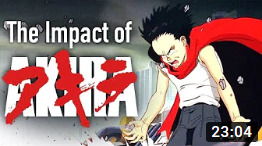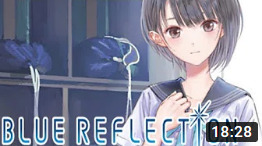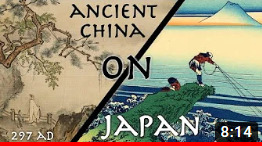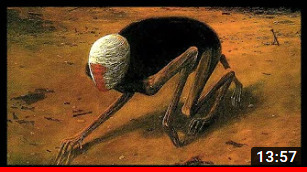#defunct car makers
Explore tagged Tumblr posts
Text
DT talk throwback: my interview w/Steve Pang, writer/director/producer of SPACES
This post is the second in the series of posts I'm making to rescue my lost interviews with people who worked with David in his earlier years: you can find the first, with David Blair - the director of Takin' Over The Asylum - right here.
Over half a decade ago now I was a writer for David Tennant News/DT Forum, one of the bigger unofficial fan sites of DT's at the time (now sadly defunct). During my time there, I got the chance in July 2015 to interview Steve Pang - the writer/director/producer of SPACES, a short film David starred in back in 1993. I didn't want this interview to sink into the depths of the Wayback Machine and I thought y'all might enjoy reading it, so here is that interview in its entirety (and if you'd like to see it in its original form, click here.)



Screenshot of SPACES from Moving Image Archive / Steve Pang, Writer-Director-Producer (today, and in a 1993 interview)
--
Recently I was able to chat with Steve Pang, the writer, director and editor of SPACES. SPACES is a 1993 short film starring David Tennant as Vinny, a young man working a night shift in a car park in Edinburgh. The film depicts the characters Vinny meets over the course of the night: an older colleague with a troubled past, a bright young girl who uses the empty car park for her violin practice, and a young homeless boy.
Pang won a First Reels funding Award in 1993 from the Scottish Film Council and Scottish Television for the script he submitted for SPACES. First Reels was “a joint short film initiative from Scottish Screen (and its predecessor body the Scottish Film Council) and Scottish Television that was launched during 1991 by the Scottish Film Council in response to a perceived need for small grants to help young and first time film-makers to make or complete their first film or video project.”
Winning the award gave Pang the funds to make SPACES a reality. In the following years he decided to shift gears and move into film and television editing. He began in film as an assistant editor in the 1997 James Bond film Tomorrow Never Dies and on television in The Vicar of Dibley. Since then he has worked in various editing capacities on a lengthy list of projects including Wonka, Band of Brothers, The Da Vinci Code, Lord of the Rings: The Return of the King, The Hitchhiker’s Guide to the Galaxy, The 10th Kingdom, and Gravity.
How did you hear about the First Reels project?
The scheme was announced whilst I was at Napier University in Edinburgh studying for my degree. As it was open to students, pretty much everyone on the course applied as it was a rare opportunity to get funding to make films.
It’s my understanding the First Reels project gave filmmakers grants to help them realize their projects, but that the projects didn’t have to be finished films to be submitted. What stage in its development was SPACES at when you submitted it? Did the grant you won help you film and complete the work or had it already been completed in a rough form?
As I recall I submitted a script and a supporting application form. Had we not won the grant, I think the film would have still gone ahead in some form but we would not have been able pay the cast or equipment suppliers – which would have undoubtedly had a detrimental effect on the film, in my opinion.
Was SPACES your first film? Take us through its development from idea to reality. How did you decide on it as your submission for First Reels?
It was probably my second or third short, but certainly the most ambitious (everything else before that was really more just fooling around and experimenting with a camera). The goal was to ‘keep things simple’ and come up with an idea that could be shot in one location with a small cast. I had worked part time in a 24hr car park in the past and my experiences in that job were the source material for the film.
SPACES is set in a car park and tells the story of one young man’s night shift. What were your inspirations for the story line? he ending? Can you share a bit more about what you hoped people would take away from the film?
The short is essentially a dramatisation of a number of real life experiences I had working part time in a 24hr car park in Edinburgh. It sounds like a pretty mundane job, but I worked with some very interesting people and there were one or two unusual incidents. I thought collating everything into a single night would make an interesting short film. I’ve always found night time in cities really fascinating and I thought SPACES would be an original way of depicting that kind of atmosphere and mood.



Screenshots from SPACES
Were the actors you chose initially the ones that actually appear in the film? How involved were you in choosing the talent, and how did the actors you chose come to your attention?
We contacted a number of local actors agencies and as I recall the actors in the film were all our first choices for each role. At the time I had no idea who David was or that he was about to become a big star. Looking back, I think he was already making a name for himself as an up-and-coming actor within the industry but as a lowly, newbie film student I didn’t have that ‘inside knowledge’. All I knew was that he seemed remarkably in tune with the character I’d written and came across as incredibly natural in the first audition. The role was his immediately. It was only after the film was completed and submitted that I started hearing comments along the lines of ‘wow you had David Tennant in your short.’
Speaking of actors — David was very young when you worked with him (it’s listed as only his 4th credited role). Was there something that impressed you about this young unknown actor? What about the experience of working with him still stands out for you all these years later?
Working with him – from rehearsal to shoot – was great. We had a tiny budget, a cold, dark location, and it was a night shoot. In hindsight, given that we were a bunch of newbie students and he was about to break through as a major actor, I’m grateful that he was so tolerant of the unsociable hours, the unglamorous location and facilities we had!
I have information that SPACES was shown on television sometime in the latter half of 1993, when Scottish Television ran three half-hour documentaries showing excerpts of the winners from the First Reels. Do you recall if it was shown, and if so, how did you feel seeing your film broadcast?
An excerpt was shown yes, along with a short interview with me. I remember being wracked with nerves on the night of the broadcast and kind of being in shock afterwards. It was probably only a couple of minutes of screen time in total.
Do you have any interesting behind-the-scenes sorts of recollections about working on the short?
I remember our equipment causing a short circuit at the location that required us to completely re-order the schedule. And I think our catering consisted of soup and bread for everyone. It was all very basic.
How do you think working on First Reels influenced you in developing your career?
It was an invaluable boost and a great learning experience. Who knows what would have happened had I not received that grant.
For Further Reference:
View Mr. Pang’s IMDb or his extensive CV.
Synopsis from entry on SPACES from the full film record at the Scottish Screen Archive.
A copy of SPACES is held at the Moving Image Archive and can be viewed at the National Library of Scotland. Private and research viewing only.
--
And that's that! I hope you all enjoyed this unique insight into SPACES and DT's work with Steve Pang!
43 notes
·
View notes
Text
New Post has been published on All about business online
New Post has been published on http://yaroreviews.info/2023/02/britishvolt-bought-by-australian-firm-recharge-industries
Britishvolt bought by Australian firm Recharge Industries
Britishvolt/PA Media
By Simon Jack
Business editor
Australian firm Recharge Industries has bought the defunct battery maker Britishvolt out of administration.
Britishvolt had plans to build a £4bn battery plant near the Port of Blyth in Northumberland but collapsed last month after running out of money.
Its downfall was blamed on a lack of battery experience, proven technology, customers and revenue.
Recharge Industries has in many ways a similar profile – it is a start up with little manufacturing experience.
The Australian company is ultimately owned and run by a New York-based investment fund called Scale Facilitation.
“What we are bringing is validated technology,” the fund’s Australian chief executive David Collard told the BBC.
“The US defence industry has validated it and it is already supplied to the UK navy through a subcontractor.”
Big ambitions
The new owners will keep the Britishvolt brand name but have very different plans for the future.
The company intends to start by focusing on batteries for energy storage and hopes to have those products available by the end of 2025.
It then intends to produce batteries for high-performance sports cars.
UK car production collapses to lowest for 66 years
Electric car battery firm goes into administration
The prospect of a much-needed plant that can produce batteries for high-volume carmakers in the UK looks many years off.
But does Mr Collard understand why many in government and the automotive industry are nervous that it won’t deliver what UK industry needs without involvement from major manufacturers like Ford, GM, JLR and BMW?
“They all started somewhere before they became big. We’ve got accelerated growth and have been successful all along the way,” he said.
Recharge Industries certainly has big ambitions. It is planning to build a similar plant in Mr Collard’s hometown of Geelong, near Melbourne. He has spent time fostering relations with government and opposition leaders there.
He conceded he hadn’t made the same level of connections in the UK yet, but had engaged with the owners of the Northumberland site.
“I spent a lot of time with Northumberland County Council. They genuinely want a gigafactory and the best thing for their people,” he said.
Mr Collard conceded he might not be the right person to deliver that.
“I’m not saying I’m the best person in the world to run this project, but at the end of the day the administrators had a legal obligation to get the best return for creditors. But I do think they care, as individuals, what the future holds.”
The deal comes just days after the Levelling-Up Secretary Michael Gove spoke to the Northern Echo during a visit to Blyth and announced £20.7m in funding for the coastal town.
“The government is ready to stand behind the right company with the right investment because we do believe that a gigafactory here in Blyth would be an appropriate way of building on the skills that local people have, and indeed the edge that this town has already displayed when it comes to renewables and the future of energy,” Mr Collard said.
‘Shovel ready’
Britishvolt’s collapse, with the loss of more than 200 jobs, had been seen as a blow to the government’s “levelling up” agenda instigated by former Prime Minister Boris Johnson.
The government had offered £100m to the former Britishvolt owners if they hit certain construction milestones.
Mr Collard said he would happily accept government funding but wanted broad political support. “Anyone will take free money but at the end of the day what we want is bi-partisan support and we have that in Australia and the US.”
He described the site as “shovel ready” but said it would be six to 12 months before the first shovel would be used on site.
Ultimately, he hopes the site will create up to 8,000 jobs on site and in the supply chain.
That would be a great outcome for the region and the UK economy but this project does not seem to be the answer yet to the UK’s pressing car battery needs.
The UK currently has only one Chinese-owned battery plant, which is next to the Nissan factory in Sunderland.
There are 35 plants planned or already under construction in the European Union.
Related Topics
Companies
Blyth
Electric cars
More on this story
UK battery start-up set to be bought by Australian firm
6 February
UK car production collapses to lowest for 66 years
26 January
Electric car battery firm goes into administration
17 January
UK battery firm staff agree to November pay cut
2 November 2022
UK battery firm averts collapse as funding secured
31 October 2022
0 notes
Text
BBC 0430 27 Feb 2023
9915Khz 0358 27 FEB 2023 - BBC (UNITED KINGDOM) in ENGLISH from TALATA VOLONONDRY. SINPO = 55433. English, dead carrier s/on @0358z then ID@0359z pips and newsroom preview. QSB=rapid rate fading, effecting modulation. @0401z World News anchored by Neil Nunes. At least one Palestinian was killed when hundreds of Israeli settlers descended on the northern occupied West Bank town of Huwara on Sunday, attacking Palestinians and setting dozens of cars and homes ablaze, according to Palestinian officials. The rampage came after Israeli authorities said a Palestinian gunman killed two settlers in the town earlier in the day. The shooting of the settlers took place just days after a massive Israeli military raid into Nablus in search of wanted militants left at least 11 Palestinians dead. Huge rallies have been held in several Mexican cities against what protesters say are government attempts to undermine the electoral authorities. The biggest was in Mexico City, where organisers say 500,000 people marched on the city's main plaza. The local government put the number at 90,000. Lawmakers last week voted to slash the budget of the National Electoral Institute and cut its staffing. A Russian A-50 surveillance military aircraft was damaged in a drone attack at an airfield near the Belarus capital of Minsk on Sunday, Belarus partisans and members of the exiled opposition said. Billionaire technology dealmaker Bao Fan is cooperating with Chinese authorities conducting an investigation, his bank says. China Renaissance Holdings, of which he is CEO, reported that he had gone missing 10 days ago. Mr Bao's disappearance comes against the backdrop of a crackdown on leading technology companies by Chinese authorities. Russia's war in Ukraine looms large as the UN Human Rights Council meets Monday, with calls for unity in condemning Moscow and extending a probe into war crimes in the conflict. Days after the United Nations General Assembly in New York voted overwhelmingly to demand Russia immediately withdraw from Ukraine, Moscow's war is expected to dominate the opening of the top UN rights body's main annual session in Geneva. Australian firm Recharge Industries has bought the defunct battery maker Britishvolt out of administration. Walter Mirisch, the astute and Oscar winning film producer who oversaw such classics as “Some Like It Hot,” “West Side Story” and “In the Heat of the Night,” has died of natural causes, the Academy of Motion Picture Arts and Sciences said Saturday. He was 101. @0406z "The Newsroom" begins. Backyard fence antenna, Etón e1XM. 250kW, beamAz 315°, bearing 63°. Received at Plymouth, United States, 15359KM from transmitter at Talata Volonondry. Local time: 2158.
0 notes
Photo




ScionAV.com - Toyota Corporation - January 4th 2016
#scionav#scion#defunct companies#defunct car makers#cars#scion ia#scion im#scion tc#scion frs#scion xb#scion xd#scion iq#music#soundcloud#mid 2010s#2010s web#2010s nostalgia#2016#winter 2016
2 notes
·
View notes
Note
Which of the famous American defunct automakers would you like to see revived? Possibly as an electric car maker.
AMC!
61 notes
·
View notes
Text

If you’re doing Self Quarintine (and you should be if you can help it) here’s some Youtube recommendations! Some of these I have posted about or recommended before but with almost all of us stuck indoors now’s a good time to remind you of some cool things you can watch for free!
I’m not gonna imbed the videos, I’ll just post the link because otherwise I would only able to post 5 and I want to collect a few so you can make a playlist or something. (I could make a playlist too but then I couldn’t tell you what each video is and you can’t pick and choose which one sounds interesting to you)
In no particular order:
Polybius: The video Game that doesn’t exist

An hour long documentary in which the youtuber did extensive research to find the origin of the “Polybius” Urban Legend, which speaks of an early arcade game reportedly seen around the early 1980s which reportedly gave people migraines, insomnia, nausea, subliminal messages, and in some cases heart attacks.
The Universal S

A shorter video in which LEMMiNO does his very best to try and track down where exactly this S that we all drew in middle school comes from? Why does literally every country on earth seem to HAVE their children draw this S?
I also recommend LEMMiNO’s video on the Dayltov Pass Incident and the perplexing UFO cases
Down the Rabbit Hole: Henry Darger

Fredrick Knudsen has an incredible fascinating series called “Down the Rabbit Hole” which simply focuses on... anything you can discover and go digging into. From weird internet personalities, to bizarre happenings in history. This video is about the artist Henry Darger, a man who lived in the early 1900s and for all intents and purposes had a perfectly average, lonely life, until it was discovered just before his death he had spent literally decades writing and drawing a fantasy world in what is possibly the longest piece of literature ever written.
I also recommend his video on the Hurdy Gurdy
Bedtime Stories Channel

I’m actually just gonna link the whole channel for “Bedtime Stories”. If you like weird and creepy stories, all of which at least claim to be “true” then Bedtime Stories is great. Coupled by illustrations and subtle sound effects, Bedtime Stories is literally listening to someone tell you a story about such things like hikers who mysteriously went missing, Sightings of Bog Men in Florida and giant Birds over Chernobyl, as well as weird and unsettling murders that remain unsolved. Sometimes the facts are a little dubious or have been disproved, but that’s not the point of the channel. It’s here to tell a creepy story, not give you a documentary.
A Journey Through Rule of Rose

Rule of Rose is a Survival Horror gave for the PS2 which has rather bad gameplay... but a FASCINATING story with just as many layers and symbolism as Silent Hill 2 could boast. It tells the story of one young woman traveling back into her own childhood in an orphanage in the 1930s, and all the horrors that contains. From repressed grief, abusive relationships, child neglect, abuse, and bullying... but it ALSO contains symbolism of societal class structure, politics, eating the rich, and how power structures work. Not for the faint of heart, but HIGHLY recommended.
I also super highly recommend his video on the similarities between Silent Hill 2 and Solaris
Clemps Reviews Crisis Core

Mr. Clemps is a great internet gamer who reviews JRPGs and other games he simply enjoys. Sprinkling in a heavy dose of comedy and very fast jokes and observations, Clemps’ videos are always upbeat, fun, and incredibly enjoyable to watch. I’m linking part 1 of his Crisis Core video in which he explains why the PSP game remains a personal favourite of his despite its flaws.
I also recommend his video on Eternal Sonata
Defunct TV: The History of Dragon Tales

Defunctland is a channel that deals with theme parks and theme park rides that are no longer standing, or which are no longer around in their current form. Defunctland also has a sub series though, called “Defunct TV” where they look at the origin of children’s TV which are no longer airing. I recommend the video on Dragon Tales which is incredibly wholesome, and a genuinely uplifting and soft story of good people trying to make good things for children. (I also recommend the videos on Bear in the Big Blue House, Zoboomafoo, and Legends of the Hidden Temple)
Hagan’s Histories of Polar Exploration

A Playlist for Diamanda Hagan’s videos about the doomed Franklin Expedition from the late 1800s, where England tried to find a passage through the Northern Arctic to the Pacific Ocean. This went horribly horribly wrong, with every member of the Expedition dead. Over a 100 years later we are still fuzzy on what EXACTLY happened, but apart from the arctic chill, there is also evidence of faulty canned food, a series of bad decisions, and cannibalism. Caution advised for this series.
I also recommend the rest of Diamanda Hagan’s channel. She is NOT for everyone, but if you enjoy somebody reviewing Z grade indie movies as well as just BIZARRE films, really bad Christian media bordering on Science Fiction (without making fun of religion itself) hot takes of classic (and modern) Dr. Who, an introduction to Red Dwarf, She’s an EXCELLENT channel to check out.
Good Bad or Bad Bad: Pass Thru

A half podcast half review show where two guys watch a terrible film, decide if it’s “Good” Bad or just Bad Bad and tell you if you should watch it too.
That’s it. That’s the whole show.
I recommend diving into the untold madness that is one of the best(?) bad film makers currently still producing batshit insane movies, the immortal Niel Breen.
There is literally nothing I can say that’ll prepare you for Niel Breen.
(I also recommend their more recent video for “Dancin’ It’s on!”)
History Buffs: Apollo 13

Do you like History? Do you like movies ABOUT History? Do you want to know if the movies about history you watch actually resemble what really happened in any way at all? History Buffs is an EXCELLENT channel, which does talk about the merit of a film itself, but is mainly focused on letting you know just how true to life that historical film you watch is. I highly recommend his longest video which covers the space race between the USA and the USSR, leading to what is known as “The most Successful Failure in NASA’s History”. The Infamous Apollo 13 and where the words “Houston, we have a problem” came from.
If you’re not interested in Apollo 13 however, I also recommend his video on the movie Casino, as well as his video on the female philosopher, Agora.
The Internet Historian: The Goodening of No Man’s Sky

With videos with literally MILLIONS of views, you probably already know the Internet Historian. But I still want to recommend him very highly because his videos are just THAT good and entertaining. I recommend his newest video, documenting that time we were all pissed off about No Man’s Sky, the difficulties the game studio was in when the game released, and how they have been working hard to finally create what is now a truly brilliant game which is winning major awards. A really good underdog story of how a video game company actually saw what was wrong with their game, and FIXED it.
I also recommend his video on Fallour 76 as well as the Failure of Dashcon
8 Creepy Video game mysteries

Hey. Did you know that sometimes there’s some REALLY weird shit in video games, hidden easter eggs which took literal decades to find as well as just a lot of “what the actual fuck?”. Oddheader is a channel with a dedicated discord and Reddit form solely focusing on trying to find or replicate bizarre video game finds, mysteries, and hidden glitches. Even if it means getting in his car and driving to a specific arcade just to check a rumour about Street Fighter II’s arcade version. So if you like getting spooked by weird game shit that’s not just some dumb creepypasta, this is a great place to start.
I also recommend his video on weird discoveries in DVDs and movies.
Red Letter Media: Best of the Worst

Look you already know who Red Letter Media is.
You know... these guys:

Here’s a video of them and Macaulay Culkin watching 3 terrible movies together.
I recommend literally any and all of their videos. Their discussion on Carpenter’s The Thing is amazing.
The Impact of Akira: The film that changed Everything

Ok trying to pick just ONE Super Eyepatch Wolf video is literal torture. Originally I was going to suggest his recent video on Final Fantasy 7 for the PSone but I realised I recommended something FF7 related with Clemps, so instead I will recommend The Impact of Akira, a video talking in depth about Akira both as a film as well as a manga, how it completely and utterly changed the anime industry both in Japan as well as the west, and why it is still a meaningful and one of the most important anime/manga even to this day, still being unsurpassed despite so much competition.
However, ALL of Wolf’s videos are incredible, so I also recommend his videos on wrestling (despite me not caring about wrestling at all), His video on how media scares us, The bizarre reality of modern Simpsons, Why the Dragon Ball Z manga is great, and literally any other video he’s made. He hasn’t made one bad video yet.
Was Oblivion as Good as I remember?

Exactly what it says on the tin. The Salt Factory goes back to playing The Elder Scrolls Oblivion and now with hindsight and modern sensibilities, gives feedback on his experience and whether Oblivion still holds up. This isn’t a super in depth review of the game’s mechanics or how its put together or how it was made. This is simply one guy talking about his experience replaying it with somejokes thrown in and how he felt revisiting it. It’s pretty good.
I also recommend the video he did on Morrowind (because I’m biased).
Weird Japan Only PS1 games

Thor High Heels is SO GOOD and deserves SO MUCH MORE subs than he currently has. THH focuses a lot of obscure and lesser known games as well as big popular titles like the Yakuza series, talking about what he likes about them, what he thinks is cool, and just what kind of atmosphere and mood a certain game has, even if the game itself is kind of ass. He’s done several videos on games that were only released in Japan, as well as videos talking about the fashion in Squaresoft games and how it inspired as well as was inspired by real world street fashion, the aesthetic of PC-98 games and other topics. He also styles his videos and thumbnails after promotional art for video games from the 90s and generally just has an excellent style to his channel over all. Very chill.
Blue Reflection Review

ValkyrieAurora is a channel run by Sophie where she talks about games she personally likes and enjoys. Her videos are really laid back and her voice is really calm and pleasant to listen to. She’s made a bit of a reputation for herself as “The channel that talks about the Atelier Games” and general is just a really enjoyable channel worth checking out if you just want something soothing to listen to.
Ancient Chinese Historians Describe Japan

Voices from the Past is a channel were historical text is read out loud in english. These can be anything like the above video where Chinese historians describe the people of Japan around 297 AD, Accounts of “Dog-Men”, or the worlds oldest letter of complaint from 1750 BC. If you’d like something interesting historically to listen to but don’t want a full blown history lesson, this is a really good way to hear contemporary people talk about their experiences and what they thought about each other in their own words, without opinions or input given by the narrator.
The Most Mysterious Song on the Internet

Whang! is a channel that covers weird internet stories, some horrifying, some curious and interesting, and some just plain weird. His video on The Most Mysterious Song on the Internet and its update, are about a song which was recorded off the radio in Germany around the 1980s, and after one person online asked if anyone knew who the artist was as they couldn’t find any information, led to the realization that NOBODY online knows where this song came from or who sang it. It’s a fun mystery to look into that, unlike some others on this list, is not creepy or unsettling, although perhaps a little frustrating.
I also recommend his video on The Most Mysterious Anime theme song, and the haunted Ebay Painting.
5 Lost, Destroyed, and Locked away Broadcasts

Yesterworld is similar to the Defunctland channel in that it talks about obsolete rides, theme parks and other forgotten pieces of entertainment. Although the majority of the channel focuses on movie rides, rollercoasters and Disneyland, I recommend the video on lost and locked away broadcasts which you can no longer see. I also recommend the video about Lost and Rediscovered movie props.
The Nightmare Artist

I talked about this one recently as I just discovered this channel. This video is about the renowned Polish artist Zdzislaw Beksinski who painted surreal and horrifying paintings during his lifetime. There is no mystery here or anything like that, it merely talks about the impact WWII left on Beksinski and how the trauma his country and people suffered influenced his painting, and how certain images and motifs can be seen to directly reference this terrible part of Poland’s history.
Disabilities in Prehistory

Modern media likes to portray how “savage” the ancient past is, and tell us stories of how any person born with a deformity or disability would be thrown over a cliff or dumped in a well because they would be too big a drain on a community to look after. But here’s the thing... according to archaeological evidence, it turns out our ancient ancestors actually did their best to look after its disabled members to the best of their abilities. This video talks about archaeological finds of people who had genetic disabilities and what we can learn from their remains. TREY the Explainer is a great channel for archaeology and also talking about what answers we could have for sightings of cryptids. (not ALL of which we have answers for)
I also recommend his video on Pre-Contact dogs as well as Homosexuality in Nature and the Genetic History of the Ainu.
Decoding “The Secret: A treasure Hunt”

“The Secret” was an art book released in the 80s full of beautiful paintings, but it is also more than that. The book has a fantasy story talking about 12 fantastical races who left wonderful treasures for humans to find,and the book’s paintings and riddles will tell you where you can find each of these treasures which are yours to keep if you can solve the puzzle... and the treasures are 100% true and can actualy be found and claimed, if you can solve the riddles in the book. The video tells the story of the artbook, who was behind it, what the treasures are, how many have been found and various other facts and details.
I also recommend the videos on this channel “The Game: A scavenger Hunt” and “The investigation of Erratas”.
5 Ancient Inventions That Were WAY Ahead Of Their Time

I would recommend you be careful with this channel as its main focus is existentialism and rather alarming topics such as “how close are we to the apocalypse” and other things whose titles alone are enough to upset me. However this video is nothing like that. This video is exactly what the title suggests it is. 5 ancient inventions that were so incredibly ahead of their time you’d think they were made up. From the computer used by ancient Greeks to steel swords we don’t know how to replicate, this video is a great mix of mystery and history.
Although I caution you with this channel, I recommend Joe’s other videos about mysterious books, as well as his video on the most inbred people in history.
However, I know I keep repeating this, I highly recommend caution with this channel. Perhaps its just me and the topics of life and existent are just triggering for me, but I’d recommend maybe just doing a search for the titles I mentioned and not to go searching through the video library unless you’re not bothered by this kind of thing.
-
Anyway I could keep going, but I think that’s a LARGE amount of videos to keep you occupied for the time being as well as some suggestions for further viewing.
Please enjoy, let me know if you found something interesting, and look after yourself!
If you enjoyed this list at all, please consider tipping me for a coffee
☕️ Ko-fi ☕️
#self isolation#Youtube#Links#Recommended#recommendations#documentary#long post#ask to tag#tumblr ate the 'read more' I put on this so screw it#Just scroll past or hit J to skip this if you want#No editing we die like men
294 notes
·
View notes
Text
7.
Do you have a specialty dish that you're really good at making? I have lots, actually! I’m a really good cook.
What video games did you play when you were growing up? Video games weren't a huge part of my childhood but I did play a lot of Sims when we had a computer that would run it and I remember playing Mario Kart and Crazy Taxi with my cousins.
Are you good at making big decisions alone or do you tend to seek approval from others? My husband and I make big decisions together. If it’s something I’m unsure about, I’ll consult different opinions online but it’s very, very rare that I’ll talk to a real life person about it. I just think its better to make your decisions privately rather than getting everyone you know’s input.
Does your town or city have good public transport, or is it easier to drive? You have to have a car here. There’s a very limited bus route and no taxi service.
What was the last cocktail you drank? Oh god, I don’t know. I don’t drink very often.
Are you good at keeping running counts and tallies in your head? Um...depends on the thing I guess?
Does your country have its own edition of Big Brother? I assume so? I’ve never watched it tho.
How often do you take a nap during the day? I’ve been napping a lot more frequently lately (which isn’t saying much as it used to be never) but it’s still pretty sparse. I would say once every couple weeks?
What social media platforms do you use? Instagram and TikTok are my two main ones and then I check Facebook every so often but I have notifications turned off and I don’t post anything. I only ever use Tumblr for porn and surveys.
Are there any foods you hate the smell of but like the taste, or vice versa? Those two things go pretty hand in hand. If I don’t like the smell of something, the taste is gonna make me wanna puke.
Do you have a dishwasher? Ugh no, I wish.
Who do you live with? My husband and our pup!
Are you listening to anything right now? My husband is playing Pokemon so I can hear that!
What is one of your favourite sitcoms? I never know what does and doesn’t count as a sitcom??
Do you make to-do lists? Oh yeah. I’m a huge list maker...a list doer tho? Not so much.
If you could magically become fluent in any language, what would it be? Spanish would be the most helpful I think.
Have you ever tried vegan ice cream? Yeah and not a fan. Everyone talks about how amazing it is and how you can’t tell the difference but I just find it to be so grainy with a weird aftertaste.
What pet names do you use for your friends/loved ones? I call my husband honey or beebs most often. I don’t think I have any nicknames for my other friends besides like ‘my love’ or an abbreviation of their name.
What pet names do you like to be called? As long as it’s not ‘baby’, I don’t care. Baby is so cringe.
What was the best concert you've ever seen? Greta Van Fleet was pretty awesome but Paramore was my favorite.
Do you have any hobbies? Oh yeah, tons. I love sewing, embroidery, photography, typing, baking, coloring, making collages, doing puzzles...just anything where I can be creative!
What is your favourite pasta shape? Radiatore (sp?)
Have you ever developed your own film? I mean I'm old enough that when I was a kid, our cameras still had film that had to be developed. But I've never physically done it with my own hands.
When was the last time you stayed in a hotel/motel and where was that? We saw Greta Van Fleet in the next town over back in the fall!
What breed was the last dog you saw? A yorkie!
Do you watch the Super Bowl? Nah.
What's your favourite Disney movie? Encanto was my favorite from this year!
What's the most stressful job you've ever had? I worked at a now defunct department store for like 6 months and my boss was a literal nightmare.
What was the last text message you received? A ‘YESSSS.’ from my sister in law.
Should you be asleep right now? If so, go to bed! Nope! It’s 1:43pm.
0 notes
Text
European electric car makers have a Russian nickel problem


About two weeks after Russia invaded Ukraine, a metal that plays a key role in batteries for electric vehicles, or EVs, was thrust suddenly into the spotlight. On March 8, the price of nickel doubled within hours on the London Metal Exchange, prompting the world’s leading metals market to shut down trading for the material. The price spike occurred amidst fears that nickel from Russia, the world’s third-largest producer of the metal, would soon become “untouchable due to sanctions risk,” as one group of analysts put it.
More than a month later, the hypothetical sanctions that helped fuel metals market chaos have yet to materialize. And an emerging supply chain that connects Russian nickel with the European EV market — most notably through a partnership between mining giant Nornickel and German chemical company BASF — remains intact for now. But the war in Ukraine, and Russia’s totalitarian crackdown on dissenting voices, have major implications for that supply chain as well as an Indigenous-led movement for environmental justice that targets Nornickel’s polluting practices.
For the European EV industry, the situation raises difficult ethical questions and highlights the competing demands of geopolitical, social, and environmental responsibility in a time of war. In recent weeks, Germany has come under growing pressure to sever more of its economic ties with Russia in order to punish Putin for his brutal war in Ukraine. But if the nation were to ban imports on Russian nickel, an industry that is essential to Europe meeting its climate goals, it would have to scramble to secure new sources of a critical raw material. At the same time, Russian Indigenous activists fear they would lose one of the few levers they have for holding Nornickel accountable: its relationships with Western companies.
“We’re in a situation of contradictory demands,” said Tilman Massa, a member of the Association of Ethical Shareholders Germany, an NGO that campaigns for environmental protection and human rights due diligence at German corporations. On the one hand, Massa says, companies are facing intense public pressure to cut ties to Russian business. “On the other hand, we now have leverage to increase the pressure on Nornickel to improve the situation on the ground.”

A defunct smelter owned by the Russian mining giant Nornickel in the town of Nikel, Russia. KIRILL KUDRYAVTSEV / AFP via Getty Images
Nornickel, the world’s largest producer of the high-grade nickel needed for EVs, isn’t a huge player in Europe’s battery supply chain today. But it is expected to become one in the future thanks to a strategic partnership with BASF that the companies announced in 2018. Through that partnership, Nornickel will supply both high-grade nickel and cobalt from its metal refinery in Harjavalta, Finland, to BASF’s nearby battery materials plant, which is scheduled to come online this year. According to Caspar Rawles, an analyst at the battery market research firm Benchmark Mineral Intelligence, BASF is expected to represent nearly 20 percent of Europe’s battery cathode production capacity by 2025, with raw materials supplied by Nornickel.
The EV industry needs nickel and cobalt to create the long-lasting, high-performance batteries Western consumers increasingly demand. Nickel, in particular, is essential for boosting the energy storage capacity of batteries, extending an EV’s range. As a result, the world’s appetite for the metal is expected to skyrocket in the coming decades: According to the International Energy Agency, producing enough batteries for EVs and energy storage to limit global warming to 2 degrees Celsius could cause global nickel demand to rise 21-fold by 2040.
But Europe, a leading consumer of these batteries, doesn’t have many local nickel suppliers.
“The dilemma that European battery and EV makers face is: do they want to use the Nornickel-BASF nickel supply chain, or to rely for the bulk of nickel imports from Indonesia and China,” Benchmark CEO Simon Moores wrote in an email to Livescience.Tech. The latter options, Moores notes, raise serious environmental and social concerns for the EV industry: nickel mining in Indonesia has been tied to severe deforestation, while China is currently under intense scrutiny for alleged human rights violations in its renewable energy supply chains.
BASF acknowledged this dilemma in a statement to Livescience.Tech. “If we were to end our collaboration with Nornickel on nickel supply, an important value chain for the European production of batteries for electric vehicles would be interrupted,” BASF told Livescience.Tech in an emailed statement. “[T]here are currently no alternatives for locally sourced nickel in Europe.”
But nickel mining in Russia isn’t free of environmental or human rights concerns. Nornickel’s production sites and refineries in the Russian Arctic are a major source of regional air pollution; a 2017 NASA article described a “man-made volcano” of sulfur dioxide lingering over the industrial city of Norilsk, where company facilities are located. Indigenous people living in the shadow of Nornickel say that the mining giant’s activities have poisoned their land and water, making it impossible for them to fish and hunt reindeer in their traditional territories.

Greenpeace Russia takes samples from the Pyasina River’s contaminated water after an oil spill near Norilsk. © Greenpeace / Dmitry Sharomov
After a major oil spill from a tank owned by Nornickel contaminated waterways around Norilsk in 2020, Indigenous activists stepped up their efforts to raise awareness of the mining giant’s impacts. In late 2020 and early 2021, a coalition of activists from Russia and allied international organizations sent letters to BASF airing their grievances about Nornickel and asking the German company to hold it accountable. BASF, activists say, listened to the coalition’s concerns, beginning an “intense and productive dialog” that continued up until the war, according to Pavel Sulyandziga, the president of the Batani Foundation, one of the Russian Indigenous groups in the coalition.
As this activist pressure was mounting, Nornickel reached out to the Initiative for Responsible Mining Assurance, or IRMA, expressing interest in becoming a member. A multi-stakeholder organization that develops environmental and social standards for the mining sector, IRMA offers membership to companies after they conduct a self-assessment of their practices followed by a third-party audit of at least one of their mines within a year.
Indigenous activists were encouraged by these developments — but now they fear Russia’s war is eroding any progress they had made. Since Russia invaded Ukraine, Sulyandziga says the coalition has had no contact with BASF or Nornickel. Meanwhile, Russian media reports and decrees indicate the government is working to relax environmental regulations, including postponing new requirements around emissions monitoring and emissions quotas for polluters, and declaring that negative environmental reviews cannot halt projects.
In March, IRMA formally paused its plans to audit Nornickel this spring. IRMA executive director Aimee Boulanger told Livescience.Tech that decision was based on the organization’s desire to stay aligned with the message the world was sending about doing business in Russia, as well as concern that people living around Nornickel’s mine sites would be unable to speak with auditors safely.
There are valid reasons for IRMA’s concern. Speaking out about polluting industries in Russia was a risky proposition before the war; in wake of Russia’s recent crackdown on dissent, it has become even more dangerous. Sulyandziga told Livescience.Tech that criminal cases have recently been filed in Russia “against the very Indigenous communities and representatives who have been in opposition to Nornickel all along” and that police have begun cracking down on those communities by confiscating reindeer meat they sell in order to support themselves.
Reached for comment, Nornickel spokesperson Andrey Kuzmin said that the company “never paused and always remains open for dialogue” with Indigenous communities. Nornickel, Kuzmin added, regularly holds meetings of a council of Indigenous representatives the company set up last year to discuss economic development, educational projects, and more. Critics like Sulyandziga, however, say that this council represents a cynical attempt by Nornickel to buy loyalty by providing support to communities who agree not to speak out against it.
Andrei Danilov, the director of the Sámi Heritage and Development Fund, which represents Sámi people of the Russian Arctic and is a member of the activist coalition, told Livescience.Tech he hopes that BASF can convince Nornickel to “restart the dialog” with its critics. BASF told Livescience.Tech that while the company is engaged with Nornickel it plans to remain in touch with Indigenous activists in addition to “encouraging Nornickel to directly engage.” While BASF has stopped pursuing new partnerships with Russian businesses, it will continue to fulfill its contracts with Nornickel “in line with applicable laws, regulations and international rules,” according to the company.
But that could change should Germany or other European countries impose sanctions targeting nickel or metals from Russia.
“It could be any day that Nornickel is on the sanctions list,” said Massa of the Association of Ethical Shareholders Germany. In early April, Nornickel’s billionaire president, Vladimir Potanin, was hit with Western sanctions for the first time.

Vladimir Potanin, the billionaire president of Nornickel, in London in 2017. Mikhail Svetlov / Getty Images
The conflicting pressures BASF and the European EV industry face with respect to Russian nickel are a microcosm of a challenge the entire world faces as the clean energy transition ramps up: how to balance securing the metals and minerals needed for that transition with the environmental and social harms caused by mining. It’s a difficult enough balancing act in times of peace; as Russia’s war shows, global conflict has the potential to further tip the balance of power away from frontline communities.
That’s why some climate justice advocates are now calling for an entirely new approach that situates mining not as a centerpiece of the energy transition, but a single approach within a broader suite of solutions including increased battery recycling and expanding mass transit to reduce demand for EVs. Where mining does occur, these advocates stress that it needs to be done responsibly and with full buy-in from affected communities.
“I don’t think we know where this [war] is going right now and what that means for the world,” IRMA’s Boulanger told Livescience.Tech. “But in a time of violence and political crisis, we need environmental and social justice all the more.”
This story was originally published by Livescience.Tech with the headline European electric car makers have a Russian nickel problem on Apr 22, 2022.
New post published on: https://livescience.tech/2022/04/22/european-electric-car-makers-have-a-russian-nickel-problem/
0 notes
Text
we use mostly old fast food restaurants or defunct businesses parcels buildings of that size. It's perfect. 2 for sale models the rest for test rides. SUV and pick up trucks separate campers at both respective to tow capacity.
Bikes separate. Tricks separate
You can purchase any SIMP product at any SIMP Dealership
Thor Freya
It's just so damned good. Half our auto makers fail in Japan and globally they quickly take the factories and land install storage of SIMP products there
Awesome work And we just did some yes
Posiden and Goddess Wife
Huge time saver this idea. Life saver cities develops around SIMP factories and for miles. Huge ones.
Around storage and dealer multiplexes cities
And areas around dealers toms of used car lots.
Auction houses
Thor Freya amazing boy our plan too though
Thank you Zues for remembering you high cat
Hera
0 notes
Text
Lotus Elise Sport 240 Final Edition 2021 UK review
On a scale of 1 to 5, how passionate and enthusiastic are you about cars?The final dance around the ring forthe Lotus Elise , one of Britain's most loved and enduring automotive icons. It was born in 1996, the year Charles and Diana got divorced, Take That split up and Dolly the sheep – the world's first cloned mammal – was born. And until the autumn, it's still with us thanks to this rather inevitable run-out edition.Actually, there are no fewer than five such ‘Final Edition' models, three pertaining tothe various Exigesthat remain on sale, this car and a similar take onthe Elise Cup 250 track day car , although without any additional power. We're focusing on this one because it uses as its base the now defunct ‘standard' Sport 220 Elise and comes with a 23bhp power upgrade to reach the 240bhp mentioned in its title. Those wondering how 220 plus 23 can make 240 should be advised that the lower figure is actually measured byLotusinPferdestärke , You may also like: bluedriver where to buy. better known to you and me as PS, the higher in good old-fashioned brake horsepower, one of which equates to 0.986 of a PS. Don't say we never teach you anything here.It seems pricey at £45,500, but that's perhaps because it's too easy to forget the Elise itself is no longer the bargain it once was when there was a truly entry-level, normally aspirated 1.6-litre version available. That car died in 2018. In reality, the Sport 240 is only £3800 more than Sport 220 it replaces, which buys not only the power hike, but also a beautiful set of ultra-light forged alloy rims, not to mention a new and chunky steering wheel and Lotus's first TFT instrument display. The remaining goodies are cosmetic in terms of Final Edition badging, bespoke colour schemes and a long list of optional extras. The important thing to remember is that in all other regards – suspension, brakes, gearbox and so on – the car remains entirely standard.Lotus says the car will be built in "limited numbers" but declines to say what that limit will be, meaning that the number is likely only to be limited by the number of people who want buy one in the time it remains on sale.As unlike a 25-year-old car as you could imagine. Of course, the Elise has evolved through three distinct series over time but it's not likea Porsche 911 , where every so often, its maker creates a ground-up new design and just slaps the old badge on it. Today's Elise is a direct evolution of the first and it speaks volumes for the clarity of Romano Artioli's original vision for the car that it still seems so relevant and contemporary today.Unlike the original, it's a properly fast car today – faster, I would say, than its apparently quite modest figures suggest and for that I expect you can blame the need for a gearchange between rest and 62mph. The driving position is the same, the wheel still perfectly sited despite being unadjustable, the pedals ideally set up for the heel and toe downshifts that driving fast on a wet track absolutely requires.And I love the engine or, more specifically, the engine in its application in this car. Because it is supercharged, there is no lag, no requirement for a certain number of revs before it will do its thing: it just goes, and sounds appropriately mechanical and purposeful, too. The gearbox, by contrast, is good enough but no more.It doesn't matter, because the Elise was, is and will always be all about its chassis. It's not as delicate as it once was: the steering has grown heavier and its 931kg weight is over 200kg more than at launch, but the feel is all still there and the balance, too. Grip is outstanding even in the wet and beyond that it is entirely up to you to decide which end you want to slide first. Its first preference is for very gentle understeer, but if you want to view the world through the side windows, it will happily do that as well, at least in the wet. In the dry, its lack of a limited-slip differential restricts that kind of fun.An Elise? Of course. This Elise? If you were going to buy a Sport 220, it's absolutely worth the upgrade.And remember this: the Sport 240 is not just the last Elise; it is alsothe last example of one of the world's most belo...
0 notes
Text
The mystery behind the data aggregation site Worldometer
MADRID — On April 28, Spanish Prime Minister Pedro Sánchez stood alone on the stage of a bright but empty briefing room. As a CNN reporter asked a question via video link, the prime minister looked deep in concentration, scribbling notes and pausing to look at the monitor only once. As he launched into his answer, he looked directly into the camera to boast about Spain’s Covid-19 testing volume.
“We are one of the countries with the highest number of tests carried out,” Sánchez said.
Initially, the prime minister cited data from a recent Organization for Economic Cooperation and Development (OECD) ranking that had placed Spain eighth in Covid-19 testing among its members.

Spanish Prime Minister Pedro Sánchez takes reporters’ questions during a press teleconference on April 28, 2020. Credit: Palace of Moncloa
“Today,” he added, “we have found out about another study, from the Johns Hopkins University, that […] ranks us fifth in the world in total tests carried out.”
There were just two problems: The OECD data had been wrong. And while some sources had ranked Spain fifth in total testing volume, Johns Hopkins was not one of them; the study Sánchez cited does not exist.
Yet two weeks later, the Spanish government is standing by the substance of its prime minister’s claim. Instead of citing Johns Hopkins, Spanish officials are now pointing to testing rankings from a data aggregation website called Worldometer — one of the sources behind the university’s widely cited coronavirus dashboard — and prompting questions about why some governments and respected institutions have chosen to trust a source about which little is known.

The Covid-19 pandemic has boosted Worldometer’s popularity. In the past six months, its pages have been shared about 2.5 million times — up from just 65 shares in the first six months of 2019, according to statistics from BuzzSumo. Credit: Worldometer
What is Worldometer?
Before the pandemic, Worldometer was best known for its “counters,” which provided live estimates of numbers like the world’s population or the number of cars produced this year. Its website indicates that revenue comes from advertising and licensing its counters. The Covid-19 crisis has undoubtedly boosted the website’s popularity. It’s one of the top-ranking Google search results for coronavirus stats. In the past six months, Worldometer’s pages have been shared about 2.5 million times — up from just 65 shares in the first six months of 2019, according to statistics provided by BuzzSumo, a company that tracks social media engagement and provides insights into content.
Accessible icon title Questioning the reliability of this coronavirus statistics site 03:36
The website claims to be “run by an international team of developers, researchers, and volunteers” and “published by a small and independent digital media company based in the United States.”
But public records show little evidence of a company that employs a multilingual team of analysts and researchers. It’s not clear whether the company has paid staff vetting its data for accuracy or whether it relies solely on automation and crowdsourcing. The site does have at least one job posting, from October, seeking a volunteer web developer.
Once known as Worldometers, the website was originally created in 2004 by Andrey Alimetov, then a 20-year-old recent immigrant from Russia who had just gotten his first IT job in New York.
“It’s a super simple website, there is nothing crazy about it,” he recently told CNN.
Within about a year, Alimetov said, the site was getting 20,000 or 30,000 visits every day but costing him too much money in web-hosting fees.
“There was no immediate fast way to cash out,” he said, so he listed the site on eBay and sold it for $2,000 sometime in 2005 or 2006.
Changing hands
When Reddit’s homepage featured Worldometer in 2013, its founder emailed the new owner, a man named Dario, to congratulate him. Dario said he bought the site to drive traffic to his other websites.

Source: Andrey Alimetov
When Reddit’s homepage featured his old site in 2013, Alimetov emailed the buyer, a man named Dario, to congratulate him.
In his reply, Dario said he bought the site to drive traffic to his other websites.
As those businesses “started to decline, I decided to invest on Worldometers, bringing in resources and people until eventually it took a course of its own,” Dario wrote.
Worldometer no longer bears its trailing “s” except in its URL. Beyond that, not much has changed.
Today, the Worldometer website is owned by a company called Dadax LLC.
Representatives for Worldometer and Dadax did not respond to CNN’s requests for interviews, but state business filings show Dadax was first formed in Delaware, in 2002. The filing lists a PO box as the company’s address. From 2003 to 2015, business filings in Connecticut and New Jersey listed Dadax’s president as Dario Pasqualino. Addresses on the filings tied the company and Pasqualino to homes in Princeton, New Jersey, and Greenwich, Connecticut. The company is still actively registered in Delaware and has been in good standing since 2010.
The company shares the Dadax name with a Shanghai-based software firm. In March, both companies issued statements denying a connection. The Chinese Dadax said it issued its statement after receiving “many calls and emails” about the stats site. Worldometer, in a tweet, said it’s never had “any type of affiliation with any entity based in China.”
IDs in the source code for Worldometer and the US Dadax’s websites link them to at least two dozen other websites that appear to share ownership. Some appear to be defunct. Others, such as usalivestats.com, italiaora.org and stopthehunger.com, share the same premise: live stats counters. Most of the sites have a rudimentary aesthetic, reminiscent of a 1990s or early 2000s internet. Some seem quite random. One Italian site displays Christmas poems and gift suggestions, like a bonsai plant (for her), or a plot of land on the moon (for him). Another site is dedicated to Sicilian puppet shows.
A person with Pasqualino’s name and birthday is also registered as a sole proprietor in Italy. That business manages and sells “advertising space,” according to an Italian registration document filed last year. Its address leads to a tidy, three-story apartment building on a leafy street in an upscale neighborhood in Bologna.

A person named Dario Pasqualino is registered as a sole proprietor in Italy. The listed address leads to a tidy, three-story apartment building on a leafy street in an upscale neighborhood in Bologna. Credit: Google
CNN was unable to reach Pasqualino through contact information listed on Worldometer and in public records.
According to Worldometer’s website, its Covid-19 data comes from a multilingual team that “monitors press briefings’ live streams throughout the day” and through crowdsourcing.
Visitors can report new Covid-19 numbers and data sources to the website – no name or email address required. A “team of analysts and researchers” validate the data, the website says. It may, at first, sound like the Wikipedia of the data world, but some Wikipedia editors have decided to avoid Worldometer as a source for Covid-19 data.
“Several updates lack a source, do not match their cited source or contain errors,” one editor, posting under the username MarioGom, wrote on a discussion page for Wikipedia editors working on Covid-19-related content last month. “Some errors are small and temporary, but some are relatively big and never corrected.”
The editor, whose real name is Mario Gómez, told CNN in an email, “Instead of trying to use a consistent criteria, [Worldometer] seems to be going for the highest figure. They have a system for users to report higher figures, but so far I failed to use it to report that some figure is erroneous and should be lower.”
Edouard Mathieu, the data manager for Our World in Data (OWID), an independent statistics website headquartered at Oxford University, has seen a similar trend.
“Their main focus seems to be having the latest number wherever it comes from, whether it’s reliable or not, whether it’s well-sourced or not,” he said. “We think people should be wary, especially media, policy-makers and decision-makers. This data is not as accurate as they think it is.”
Virginia Pitzer, a Yale University epidemiologist focused on modeling Covid-19’s spread in the United States, said she’d never heard of Worldometer. CNN asked her to assess the website’s reliability.
“I think the Worldometer site is legitimate,” she wrote via email, explaining that many of its sources appear to be credible government websites. But she also found flaws, inconsistencies and an apparent lack of expert curation. “The interpretation of the data is lacking,” she wrote, explaining that she found the data on active cases “particularly problematic” because data on recoveries is not consistently reported.
Pitzer also found few detailed explanations of data reporting issues or discrepancies. For Spain, it’s a single sentence. For many other countries, there are no explanations at all.
She also found errors. In the Spanish data, for instance, Worldometer reports more than 18,000 recoveries on April 24. The Spanish government reported 3,105 recoveries that day.

Spanish Prime Minister Pedro Sánchez delivers a speech during question time at the Lower House in Madrid on May 13, 2020. Credit: Andres Ballesteros/AFP/Pool/Getty Images
Accuracy, fairness and apples-to-apples comparisons
When Spanish Prime Minister Pedro Sánchez boasted of Spain’s high rankings, he didn’t pull his numbers out of thin air. On April 27, the OECD wrongly ranked Spain eighth in testing per capita. Initially, the OECD had used data from OWID to compile its statistics. But it sourced the Spanish numbers independently because OWID’s data was incomplete. The mixed sourcing skewed Spain’s position in the ranking because it counted a broader category of tests than the other countries’ numbers. The organization corrected itself the next day, two hours before Sánchez’s press conference, bumping Spain to 17th place.
In its statement, the OECD said “we regret the confusion created on a sensitive issue by any debate on methodological issues” and stressed that increasing the availability of testing in general is more important than knowing where any particular country ranks.
Sánchez’s later reference to a Johns Hopkins study, in which he said Spain ranked fifth for testing worldwide, appears to have been a case of mixed-up attribution by the prime minister. JHU has not published international testing figures. Jill Rosen, a spokeswoman for the school, told CNN the university couldn’t identify a report that matched Sánchez’s description.
At a press conference on May 9, Sánchez evaded a CNN question pressing him on the JHU study’s existence and listed the government’s numbers on testing totals instead. In comments made to a Spanish reporter the next day, health minister Salvador Illa continued to insist the testing data had been released by JHU, though he pointed to Worldometer as the underlying source. Since Johns Hopkins gets its data from Worldometer, he argued, it’s just as good.
“It is data given by the John Hopkins University […] taken from as a fundamental source of information, the website Worldometer,” Illa said. “You can check it.”
It is true that on April 28, Worldometer’s data had ranked Spain fifth when it came to total testing volume. At the time, OWID data also ranked Spain fifth, but as more countries began reporting larger testing volumes, it became clear how Worldometer’s data is flawed. Its Spain figure includes both polymerase chain reaction (PCR) tests, which show if patients are currently infected, and antibody tests, which indicate if patients were ever infected. For most countries besides Spain, Worldometer’s data appears to only count PCR tests.
Because so few countries report antibodies testing data and to ensure an apples-to-apples comparison, OWID says it only tracks PCR tests. By that measure, as of May 17, Spain ranks sixth, behind the US, Russia, Germany, Italy and India. Worldometer ranked Spain fourth.
But relying on the ranking by the raw number of tests performed is still misleading because it doesn’t account for population differences between countries.
OWID’s data manager, Edouard Mathieu, says a much fairer way to compare testing data is to account for population size. As of May 10, OWID placed Spain 19th in testing per 1,000 people. Worldometer placed Spain 15th by a similar measure.
Tale of two rankings
Worldometer’s data does rank Spain fifth in terms of total testing volume. But relying on raw numbers is misleading because it doesn’t account for differences between countries. When adjusted for population, Spain’s ranking falls to 16th. Experts say this data, from Worldometer, is further flawed beacuse its Spain figure counts a broader category of tests than most other countries’.
Top 20 countries by…
Tests performed per 1 million residents
Data as of May 18, 2020 Source: Worldometer
Roberto Rodríguez Aramayo, a research professor at the Spanish National Research Council (CSIC)’s Institute of Philosophy and a former president of a Spanish ethics association, said Spain is reporting data from both the most and least reliable types of tests.
“Unfortunately, there seems to be certain [political] interests in the readings that are given of these data, when they are shown,” he said.
What does Worldometer have to do with Johns Hopkins University?
Johns Hopkins has not published international data on Covid-19 testing, but it does list Worldometer as one of several sources for its widely-cited coronavirus dashboard.
The university has declined to say what specific data points it relies on Worldometer for, but issues with the counter site’s data have caused at least one notable error.
On April 8, JHU’s global tally of confirmed Covid-19 cases briefly crossed 1.5 million before dropping by more than 30,000. Johns Hopkins later posted an explanation for the incident on its GitHub page. At the time, JHU told CNN the error appeared to come from a double counting of French nursing home cases. But French officials told CNN there had been no revision, not even to nursing home data. Johns Hopkins’ data appeared to come directly from Worldometer. The website listed no source for its figure.
One Wikipedia editor, James Heilman, a clinical assistant professor of emergency medicine at the University of British Columbia, said Wikipedia volunteers have noticed persistent errors with Worldometer, but also with “a more reputable name with a longer history of accuracy,” referring to Johns Hopkins. “We hope they also double check the numbers.”
Johns Hopkins’ response
Read Johns Hopkins University’s full response to CNN’s questions for this story.

Source: Johns Hopkins University
In an article published in February, JHU said it began manually tracking Covid-19 data for its dashboard in January. When that became unsustainable, the university began scraping data from primary sources and aggregation websites. Lauren Gardner, the associate engineering professor who runs the university’s Covid-19 dashboard, told CNN in a statement that the university uses a “two-stage anomaly detection system” to catch potential data problems. “Moderate” changes are automatically added to the dashboard but flagged so staff can double-check them in real time. Changes beyond a certain threshold require “a human to manually check and approve the values before publication to the dashboard,” Gardner said.
The university’s reliance on Worldometer has surprised some academics.
Phil Beaver, a data scientist at the University of Denver, seemed at a loss for words when he was asked what he thought of JHU citing Worldometer.
“I am not sure, that is a great question, I kind of got the impression that Worldometer was relying on [Johns] Hopkins,” he told CNN after a lengthy pause.
Mathieu also seemed taken aback.
“I think JHU has been under a lot of pressure to update their numbers,” he said. “Because of this pressure they have been forced to or incentivized to get data from places that they shouldn’t have, but in general I would expect JHU to be a fairly reliable source.”

Johns Hopkins has not published international data on Covid-19 testing, but it does list Worldometer as one of several sources for its widely cited coronavirus dashboard. Credit: Johns Hopkins University
In the university’s response to CNN, Gardner said Worldometer was one of “dozens” of sources and that “before incorporating any new source, we validate their data by comparing it against other references.”
“We try not to use a single source for any of our data,” Gardner added. “We use reporting from public health agencies and sources of aggregation to cross-validate numbers.”
The Spanish government and Johns Hopkins are not alone in citing Worldometer. The website has been cited by Financial Times, The New York Times, The Washington Post, Fox News and CNN.
The British government cited Worldometer data on Covid-19 deaths during its daily press conferences for much of April, before switching to Johns Hopkins data.
“Both Worldometers and John Hopkins provided comprehensive and well-respected data. As the situation developed, we transferred from Worldometers to John Hopkins as John Hopkins relies more on official sources,” read a statement from a UK government spokesperson.
‘Contaminating public opinion’
In Spain, Sánchez’s apparent Johns Hopkins misattribution has become a major controversy. In parliament on Wednesday, center-right People’s Party MP Cayetana Alvarez de Toledo called the government the party “of the lies to CNN and the Spanish people.”
On May 10, a spokeswoman for Spain’s embassy in London complained to CNN about its coverage of the matter.
“Back in April Mr. Sánchez mentioned analysis of statistical data carried out by Johns Hopkins University that are based upon data published by Worldometer,” the spokeswoman wrote in an email sent to the network’s diplomatic editor just after 4 a.m.
“Even if Mr. Sánchez did not mention Worldometer as a primary source in his remarks, [CNN] could have known that most of the comparisons and analysis on Covid-19 in the world use [Worldometer’s] tables.”
In remarks to CNN, a spokesperson for the prime minister’s office acknowledged that Worldometer counts PCR tests and antibodies tests together and rejected critics’ call to adjust testing numbers for population, calling it a “trap that the OECD and the Spanish press […] has fallen into” and arguing that Spain should not be compared with small countries like Malta, Luxembourg or Bahrain.
It’s not clear, though, why the Spanish government continues to insist that the testing data published by Worldometer was put out by Johns Hopkins University.
Its refusal to acknowledge its attribution error comes just a month after Spain’s Justice Minister Juan Carlos Campo said the government was considering changes to the law, seeking to crack down on those peddling misinformation.
“I believe, it is more than justified — with the calm, tranquility needed for any legal changes — that we review what our legal instruments are to stop those contaminating public opinion in a serious and unjustified way,” Campo said.
At the time, Human Rights Watch executive director Kenneth Roth told CNN in an email, “If the justice minister is suggesting penalizing speech that contaminates public opinion, that would be very dangerous.”
“Turning the government into a censor would undermine that public accountability precisely at the moment when it is most needed,” Roth warned.
In her letter to CNN, the embassy spokeswoman was emphatic that Spain was — and still is — fifth in the world in Covid-19 testing, attaching screenshots of Worldometer tables as proof.
“Figures speak louder than words,” she wrote. “And not willing to acknowledge the truth of reality […] is very worrying, to say the least.”
Source link
قالب وردپرس
from World Wide News https://ift.tt/2zfzZsf
0 notes
Text
TSLA Closer to $4,000 Stock: 3 Reasons to Think Like a Tesla Investor
TSLA Closer to $4,000 Stock: 3 Reasons to Think Like a Tesla Investor:
If you want to make money in the stock market, you need to think like a Tesla investor.
You see, looking at the history of car companies, you’d think that a person would have to be out of their mind to run one.
In fact, Wikipedia has compiled a list of defunct U.S. auto manufacturers. I didn’t count exactly how many are on the list, but my guess is there are more than 1,000.
These are all companies that failed to make it, almost all within the past 150 years.
But here’s one that isn’t going to make that list: Tesla.
Ever since Tesla released its first car, the 2008 Roadster, people have been dying to mark it off as a failure.
But Tesla can’t be stopped.
In fact, the company is on track to meet Paul Mampilly’s prediction that TSLA is going to be a $4,000 stock.
That’s big news for investors in the stock. So today, I’ll tell you how to make big money in stocks by thinking like a Tesla investor.
There are three big reasons why Tesla will become the future of transportation and make investors rich in the process.
No. 1: It’s Extremely Efficient
A lot of people love to hate Elon Musk for making bold predictions.
But at Bold Profits, that’s what we’re all about!
And although Musk has a somewhat spotty history of delivering promises on time, it’s impossible to argue that Tesla hasn’t become one of the most breakthrough companies in our lifetime.
First, when you consider the magnitude of disrupting the auto industry, Tesla’s done it in a relatively short period of time.
The company has only been consistently selling cars since 2013 (the 2008 Roadster was short-lived, as only 2,500 were sold). That year, about 95,000 electric cars were sold in the United States … and about 23,000 were Teslas.
Then, in 2017, the company released its first mass-produced car, the Model 3. That production got ramped up significantly in 2018. And from last January through September 2019, Tesla had already sold over 250,000.
It’s become by far the most popular electric car in the United States, making up about 41% of total sales of all electric vehicles.
And keep in mind, this has all been accomplished through only two “Gigafactories,” which are Tesla’s production facilities.
Five years ago, these Gigafactories didn’t even exist. And now, Tesla recently began making cars in a third facility in China and is building a fourth Gigafactory in Germany, which means the company will have easier access to sell its cars all over the world.
No. 2: Electric Cars Are Cheaper to Make
One of the biggest advantages that Tesla has over its competition is that it’s a pure-play electric vehicle maker.
All of its manufacturing sites, tools and components are geared toward one thing: creating electric cars.
Meanwhile, competitors such as Ford and General Motors are scrambling to get into this business. This means they have to completely restructure their businesses. That takes a lot of time and money, and since most auto companies were late to start, they’ve fallen behind by years and billions of dollars.
Since cars were first mass-produced, they’ve run on internal combustion engines. The drivetrains of these cars have over 2,000 moving parts. And anyone who’s driven for any length of time can attest that it doesn’t take much for things to break down.
In fact, the top 10 most common car repairs are all related to the drivetrain, and they’re not cheap:
On the other hand, electric vehicles have about 20 moving parts in their drivetrains. This means there’s a lot less that can become damaged or dysfunctional, and a lot less money involved in the process of making the cars.
Over the past year, Tesla has achieved a higher gross margin than some of the biggest car companies in the world.
Gross margin is the best statistic to look at when you want to see if a company is properly scaling its business. For example, if you sell something for $20 that costs you $19 to make, you only have $1 left over, and that means your gross margin is 5%.
As companies begin to mass-produce larger numbers of items, the cost to make each item will usually drop. This is exactly the case for Tesla, and the company still has a long way to go.
So, as Tesla keeps ramping up production, it’ll become even more profitable and extend its lead over the competition.
No 3: No Shortage of Investors
On paper, you can make a strong case that any car company will go out of business. As I mentioned earlier, there are a lot of expenses associated with manufacturing cars. If you bet against every car company that’s existed, you’d be rich.
But Tesla is different, and that’s clear by the patience and persistence of its investors.
Back in 2017, Tesla did the unthinkable and asked investors to buy bonds in the company. Bonds are another word for debt, meaning Tesla was planning on adding debt to the company.
If you’d listened to Wall Street, this was a horrible idea and a sure sign of bankruptcy. After all, who would want to invest in Tesla’s debt?
However, Tesla ended up selling all its anticipated debt ($1.5 billion), plus an additional $300 million. Clearly, investors had a lot more trust in the company than was being portrayed on TV.
Then, this past May, the company did it again. Tesla had planned on selling another $1.35 billion in bonds. But investor demand was extremely strong once again, and it ended up increasing that to $1.6 billion.
The Bottom Line: Think Like a Tesla Investor
Bankruptcy is a plague that’s killed just about ever car company that’s ever existed.
Yet, Tesla is beating the odds time and time again. It continues to prove the media wrong, as it’s not only surviving, but winning handily in the electric vehicle race.
Tesla is the best example of new-world companies disrupting the old, creating what Paul calls “America 2.0.”
When this disruption happens to any stock, it doesn’t follow a straight line to the top. There will be ups and downs. Which is why it requires strong hands.
If you hold your own, you stand to reap the rewards. Just think about it. A small investment in Tesla could explode higher once Tesla’s stock hits $4,000.
And that’s exactly what Paul and I predict for the company.
For more of our 2020 forecasts — including what the new year has in store for Tesla — take a look at this video.
And remember to keep strong hands and think like a Tesla investor for massive 2020 gains.
[embedded content]
Regards,

Ian Dyer
Editor, Rebound Profit Trader
0 notes
Link
If you want to make money in the stock market, you need to think like a Tesla investor.
You see, looking at the history of car companies, you’d think that a person would have to be out of their mind to run one.
In fact, Wikipedia has compiled a list of defunct U.S. auto manufacturers. I didn’t count exactly how many are on the list, but my guess is there are more than 1,000.
These are all companies that failed to make it, almost all within the past 150 years.
But here’s one that isn’t going to make that list: Tesla.
Ever since Tesla released its first car, the 2008 Roadster, people have been dying to mark it off as a failure.
But Tesla can’t be stopped.
In fact, the company is on track to meet Paul Mampilly’s prediction that TSLA is going to be a $4,000 stock.
That’s big news for investors in the stock. So today, I’ll tell you how to make big money in stocks by thinking like a Tesla investor.
There are three big reasons why Tesla will become the future of transportation and make investors rich in the process.
No. 1: It’s Extremely Efficient
A lot of people love to hate Elon Musk for making bold predictions.
But at Bold Profits, that’s what we’re all about!
And although Musk has a somewhat spotty history of delivering promises on time, it’s impossible to argue that Tesla hasn’t become one of the most breakthrough companies in our lifetime.
First, when you consider the magnitude of disrupting the auto industry, Tesla’s done it in a relatively short period of time.
The company has only been consistently selling cars since 2013 (the 2008 Roadster was short-lived, as only 2,500 were sold). That year, about 95,000 electric cars were sold in the United States … and about 23,000 were Teslas.
Then, in 2017, the company released its first mass-produced car, the Model 3. That production got ramped up significantly in 2018. And from last January through September 2019, Tesla had already sold over 250,000.
It’s become by far the most popular electric car in the United States, making up about 41% of total sales of all electric vehicles.
And keep in mind, this has all been accomplished through only two “Gigafactories,” which are Tesla’s production facilities.
Five years ago, these Gigafactories didn’t even exist. And now, Tesla recently began making cars in a third facility in China and is building a fourth Gigafactory in Germany, which means the company will have easier access to sell its cars all over the world.
No. 2: Electric Cars Are Cheaper to Make
One of the biggest advantages that Tesla has over its competition is that it’s a pure-play electric vehicle maker.
All of its manufacturing sites, tools and components are geared toward one thing: creating electric cars.
Meanwhile, competitors such as Ford and General Motors are scrambling to get into this business. This means they have to completely restructure their businesses. That takes a lot of time and money, and since most auto companies were late to start, they’ve fallen behind by years and billions of dollars.
Since cars were first mass-produced, they’ve run on internal combustion engines. The drivetrains of these cars have over 2,000 moving parts. And anyone who’s driven for any length of time can attest that it doesn’t take much for things to break down.
In fact, the top 10 most common car repairs are all related to the drivetrain, and they’re not cheap:
On the other hand, electric vehicles have about 20 moving parts in their drivetrains. This means there’s a lot less that can become damaged or dysfunctional, and a lot less money involved in the process of making the cars.
Over the past year, Tesla has achieved a higher gross margin than some of the biggest car companies in the world.
Gross margin is the best statistic to look at when you want to see if a company is properly scaling its business. For example, if you sell something for $20 that costs you $19 to make, you only have $1 left over, and that means your gross margin is 5%.
As companies begin to mass-produce larger numbers of items, the cost to make each item will usually drop. This is exactly the case for Tesla, and the company still has a long way to go.
So, as Tesla keeps ramping up production, it’ll become even more profitable and extend its lead over the competition.
No 3: No Shortage of Investors
On paper, you can make a strong case that any car company will go out of business. As I mentioned earlier, there are a lot of expenses associated with manufacturing cars. If you bet against every car company that’s existed, you’d be rich.
But Tesla is different, and that’s clear by the patience and persistence of its investors.
Back in 2017, Tesla did the unthinkable and asked investors to buy bonds in the company. Bonds are another word for debt, meaning Tesla was planning on adding debt to the company.
If you’d listened to Wall Street, this was a horrible idea and a sure sign of bankruptcy. After all, who would want to invest in Tesla’s debt?
However, Tesla ended up selling all its anticipated debt ($1.5 billion), plus an additional $300 million. Clearly, investors had a lot more trust in the company than was being portrayed on TV.
Then, this past May, the company did it again. Tesla had planned on selling another $1.35 billion in bonds. But investor demand was extremely strong once again, and it ended up increasing that to $1.6 billion.
The Bottom Line: Think Like a Tesla Investor
Bankruptcy is a plague that’s killed just about ever car company that’s ever existed.
Yet, Tesla is beating the odds time and time again. It continues to prove the media wrong, as it’s not only surviving, but winning handily in the electric vehicle race.
Tesla is the best example of new-world companies disrupting the old, creating what Paul calls “America 2.0.”
When this disruption happens to any stock, it doesn’t follow a straight line to the top. There will be ups and downs. Which is why it requires strong hands.
If you hold your own, you stand to reap the rewards. Just think about it. A small investment in Tesla could explode higher once Tesla’s stock hits $4,000.
And that’s exactly what Paul and I predict for the company.
For more of our 2020 forecasts — including what the new year has in store for Tesla — take a look at this video.
And remember to keep strong hands and think like a Tesla investor for massive 2020 gains.
[embedded content]
Regards,

Ian Dyer
Editor, Rebound Profit Trader
0 notes
Photo

There is very little info out there about this band, so I thought I’d collect it and post it all right here in a coherent timeline. Enjoy!
This band history has been pieced together with fragments of band member comments found on the Interwebs. My primary source was the fantastic writeup on the now-defunct Dirty Sheets Zine, along with various thread comments from band members Martin John Butler and Bob Jones.
The Demons were spawned around 1974 by 19-year old guitarist Martin John Butler, who had been part of the New York City Rock scene since he was 15, and drug dealer/aspiring singer Eliott Kidd (née Cohen). Looking for a second guitarist, Butler brought in his former bandmate Walter Lure, who he played with in The Stray Cats (no, not those Stray Cats). Robbie Twyford (bass), Bob Jones (guitar), and Billy O’Conner (drums) rounded out the quintet. Billy would leave to join Blondie, so Mike Rappaport was drafted to fill the drummer slot.
The band was close to other lesser and better known groups on the scene, including Elda Stilletto, Snooky and Tish and Debbie Harry, Chris Stein, the Ramones, Television, Tuff Darts, and the New York Dolls, who The Demons shared a loft with on 23rd St., next to the Chelsea Hotel. Actually, the Demons-Dolls bond went further than cohabitation; as Lure recollected, “[Eliot Kidd] was a drug dealer who sold drugs to the Dolls....[The Demons] started playing original stuff, and it was decent. Plus we were using the Dolls’ rehearsal loft, because he’d been selling drugs to them for years. That’s where I got to meet Johnny and Jerry [Nolan] for the first time.”
Not to get sidetracked, but let’s pull the string on Waldo’s tenure with The Demons, as he split not long after the band played their first gig. It was at that Spring ’75 gig at legendary cabaret 82 Club (aka Club 82, at 82 East 4th St.) that word of the Dolls’ demise began to circulate amongst the cognoscenti. “We heard that The Dolls had broken up down in Florida and Jerry and Johnny were coming to New York and joining Richard Hell to start a band. They already had a name, The Heartbreakers, and there was word out that they wanted another guitar player,” he said.
JT and Jerry attended that first Demons show, probably to buy coke from Eliot, as Waldo tells it, and invited Lure to try out for the ‘Breakers later that night. A week later he had a try-out, didn’t hear anything for about a month, and when The Demons were booked to open for a Hell-less Heartbreakers at CBGB’s for a July 4th festival at CB’s, Jerry approached Waldo with an invite. Lure’s final performance as a Demon turned out to be a miserable one, with a rainstorm preventing much a crowd from attending. Looking back, Lure said that “with about 20 people in the audience, it was depressing.” The following day, he joined forces with JT, Jerry, and Billy Rath.
So, looping back to The Demons, they had made recordings that were slated to be on a second installment of the Live At CBGB’s album, but with other bands on bill, like Blondie and Mink Deville, signing with major labels, the release was frozen. Craig Leon, an assistant to Richard Gottehrer, who had worked with the Ramones, Blondie, Suicide, and Richard Hell, had produced the CBGB’s recordings, and subsequently introduced the band to Mercury Records. The Mercury contract was for $1.7 million in 2019 dollars and five albums.
Live, The Demons played a brand of hard-edged Rock ’N Roll. Mercury, though, had different ideas, and following that familiar tale of “Record Company Knows Best,” Leon colluded with Eliot to file the Demons’ edge down to something more akin to Power Pop. Butler fought the change in sound. “Had they listened to me, we would have been a fair amount harder on the record. I always felt we were more like a Punk version of the Animals, than the Punk/Pop bands like the Knack and the Romantics later copied.”
Listening to the album in 2019—on vinyl, as it’s never been reissued on CD—it doesn’t have the punch you’d expect from the guy who’s listed as the producer for the Ramones first album. That said, the album sold around 250,000 copies and reached #1 in 11 states. The only problem was that tragedy and bad karma were about to rear their heads.
In the wee hours of December 31, 1977, Rappoprt had pulled over to the side of the Gowanus Parkway in Brooklyn, only to have a truck slam into the back of his car, killing him almost instantly. “He'd been living a wild life then, and we expected something like this to happen at any time. He'd grown as a person,” Butler recalled. “Michael was getting getting high, starting fights with Hell's Angels, and causing all sorts of trouble wherever he went. Yet, he was the sweetest soul of us all. He came into the band later, when we were clear that a record deal was imminent.”
About the same time, Kidd’s pharmaceutical entrepreneurship caught up to him, and he was shipped to prison on drug charges, leading to Mercury dumping The Demons, before Eliot was on the other side of the bars. The Demons had been scheduled to head out on a world tour covering 180 dates with other Mercury artists, including David Bowie and Rush, whose Farewell To Kings had edged into the American Top 40, on its way to platinum status.
“The deal with Mercury was a huge deal,” Butler remembered, “but when Eliot was stuck in jail, and our drummer Mike died, Mercury dropped us.”
“It was a case of the people who signed us leaving for another company, and the new people not knowing us personally. Since we weren't a big money maker yet, we were expendable to new management. It was a mistake on their part. We sold more albums in that brief time than anyone, with the probable exception of Patti Smith.”
Eliot’s four-month stint at Rikers had come to an end in early ’78, but he was so occupied with his court case that most everything else took a backseat, including the band.
The Demons were careening into the void, yet not all was lost. As Punk was beginning to boil over, they had caught the attention of legendary record executive and then-Arista Records boss Clive Davis, who offered a $1 million contract ($3.9 million in 2019 dollars), but, as Butler recalls, “Eliot then tried to take over the band by asking for a 60% share of the band's stock. I refused and quit, despite the incredible deal.”
And now, fans of The Demons’ lone recording can only wish that the smattering of other recordings that found their way to tape would resurface. Butler recalls, “There was a demo recorded at Electric Lady that was way more like the band really sounded, but it's lost in time. We also did a monster set at CBGB that was supposed to be a Live at CBGB vol. II, but the other bands on the record had gotten famous, and their labels didn't want it released, so Hilly recorded over the master tapes.”
Most information collected from the following sites:
• http://dirtysheetszine.blogspot.com/2011/04/demons-self-titled-mercury-records-1977.html
• http://thevinylscore.blogspot.com/2017/12/the-demons-st.html
• https://www.martinjohnbutler.com/bio-1
0 notes
Text
Porsche May Eventually Stop Selling Cars To The Public
The German sports car maker’s finance and IT boss has suggested that the company already sees a time when its current direct sales model will be defunct

from Car Throttle https://www.carthrottle.com/post/porsche-may-eventually-stop-selling-cars-to-the-public/?utm_source=carthrottle-rssfeed&utm_medium=rss via Car Throttle from Blogger http://jeffrey2garner.blogspot.com/2019/10/porsche-may-eventually-stop-selling.html via IFTTT
0 notes
Photo

Used Volkswagen Sharan review
Image 1 of 15 Image 1 of 15 16 Oct, 2017 1:30pm Richard Dredge A full used buyer’s guide on the Volkswagen Sharan covering the Sharan Mk2 (2010-date) Volkswagen should know a thing or two about MPVs. After all, it built the first one, the Type 2 – which it introduced as long ago as 1949. Incredibly, the Type 2 stayed in production all the way until 2013, by which point VW had launched a more mainstream people carrier, the Sharan. This had been developed with Ford and launched back in 1996. An all-new Sharan followed in 2010, but was now unrelated to its Ford Galaxy rival. Seven years after its introduction, the Sharan still has what it takes thanks to its excellent refinement, car-like driving experience and typically solid VW interior. Trouble is, reliability can be a little patchy, so here’s what to look for. Models covered • Volkswagen Sharan Mk2 (2010-date) - Strong efficiency and space still set Mk2 people carrier apart. Volkswagen Sharan Mk2 Image 3 of 15 Image 3 of 15 History The first Sharan Mk2s arrived in UK showrooms in November 2010. Buyers could pick from S, SE, SEL and Executive trim levels, while there was a choice of either 1.4 TSI petrol or 2.0 TDI diesel engines, with the latter coming in 138bhp or 168bhp forms. For those in a hurry there was a 197bhp 2.0 TSI petrol option, but as with the 1.4 TSI, sales of these were low and this edition was dropped within a couple of years; you’re unlikely to find one for sale. In October 2015 a refreshed Sharan was revealed, but changes were minimal. All engines were now Euro 6-compliant and more efficient than before, while all cars got additional standard equipment. Which one should I buy? Even the least powerful engine, the 2.0 TDI 115, offers enough muscle for relaxed cruising, while manual and automatic boxes are superb to use. The Sharan S gets a DAB radio, three-zone climate control, powered windows front and rear, electrically heated and adjustable door mirrors and tyre pressure monitoring. Move up to the SE for 16-inch alloy wheels, cruise control, Bluetooth, parking sensors front and rear plus automatic lights and wipers. Image 2 of 15 Image 2 of 15 The driver’s seat also has electric adjustment. SEL trim increases the alloy wheel size to 17 inches and adds privacy glass, a panoramic sunroof, Alcantara and leather trim, front seat heating and an upgraded hi-fi. Opting for Executive brings leather trim and six seats, each with armrests. Volkswagen Sharan Mk2 reviews Volkswagen Sharan in-depth reviewVolkswagen Sharan facelift reviewVolkswagen Sharan review Alternatives to the Volkswagen Sharan Mk2 The closest rival is SEAT’s Alhambra – the same car, but with different badges. As a result you get the same engines (albeit with no 2.0 TSI option) and transmissions, but more for your money. The Ford Galaxy is the UK’s top-selling MPV, so there are lots on sale, and this full-size people carrier is terrific value as well as roomy, well equipped and comfortable. Image 5 of 15 Image 5 of 15 If space isn’t a priority and you’d prefer something more fun to drive, take a closer look at the Ford S-MAX. Buyers focusing more on carrying capacity should consider the Kia Sedona and Chrysler Grand Voyager; both are now defunct, and strong value. What to look for: Seat space Third row of seats is too cramped for adults, but there is a rare six-seater Executive option which increases the amount of space. Tech limits Parking sensors are standard only on SE models and above. There’s also a parking camera option, but not if a DAB radio is fitted. Adblue costs Sharans with the 2.0 TDI engine have an AdBlue tank that has to be topped up; it can use a litre every 500 miles, which soon adds up. Light issues The automatic lights can come on even if it’s not that dark. Using the correct diagnostic equipment, dealers can recalibrate. Image 7 of 15 Image 7 of 15 Interior It’s pure VW inside, so build quality is excellent, as is the clarity of the layout. But there’s little in the way of flair. This is one of the biggest MPVs going, so practicality and cabin space are superb; the boot stows 300 litres with all of the seats up and a massive 2,297 litres with rows two and three folded. Running costs Sharan owners can choose fixed or variable servicing, the former at 10,000 miles or annually. The latter allows up to two years or 20,000 miles between checks. Services alternate between minor and major, and prices vary up to the car’s third birthday; then they’re set at £164 and £329. Both the TSI and TDI engines are fitted with a cambelt which should be changed every five years or 80,000 miles; expect to pay £434 for this on a petrol engine, or £399 on a diesel. Brake fluid needs renewing every two years (£64) and the air-con should be serviced, too (£79). Image 8 of 15 Image 8 of 15 Recalls It’s impressive that the Sharan has been recalled only once in the seven years since its launch; this affected just 38 models (and included some Touaregs). The gas generator canisters for the side airbags could fail through damage in an impact and lead to the canisters exploding. The recall affected cars built from 23-28 January 2015, and was issued in April 2016. Diesel versions of the Sharan made from 2011 to 2015 with AdBlue systems were involved in the Volkswagen emissions scandal. Driver Power owner satisfaction This generation of Sharan has never appeared in our Driver Power surveys because it’s not a big seller. However, we’ve not heard of any major issues outside the emissions recall affecting the MPV. People carriers have fallen out of favour, as buyers have shifted to crossovers. But don’t be too keen to follow the crowd if you’ve got a large family to transport, because nothing can match the usability of a full-size MPV. The problem is that many car makers gave up on this segment a while ago, recognising that tastes have changed. As a result your choices are limited, but we’d say the Sharan is one of the best options with its sliding doors, efficient engines and roomy cabin. The SEAT Alhambra and Ford Galaxy can be bought for less, though, so haggle hard to make sure you get your Sharan at the right price.
http://www.autoexpress.co.uk/volkswagen/sharan/101360/used-volkswagen-sharan-review
0 notes